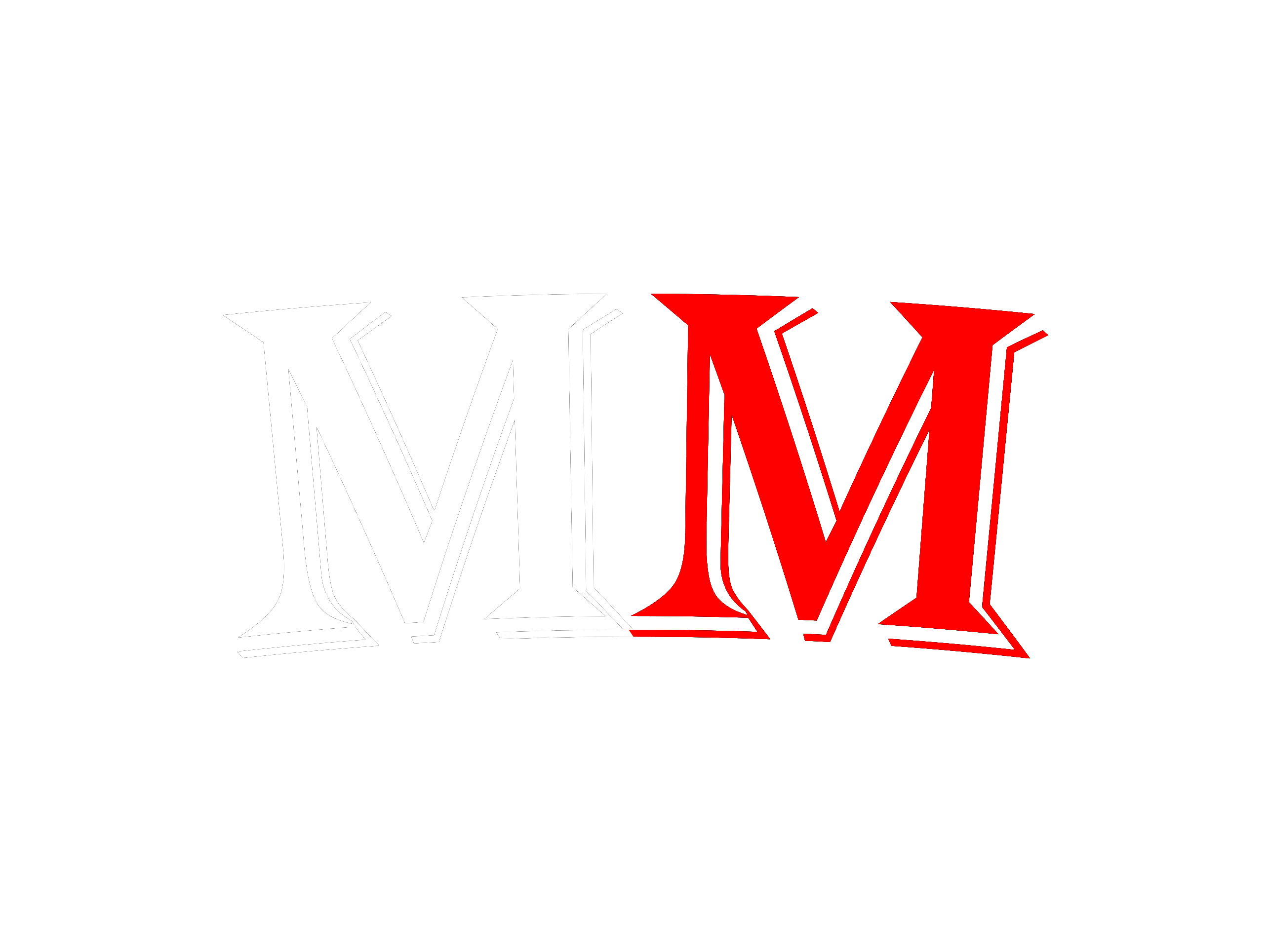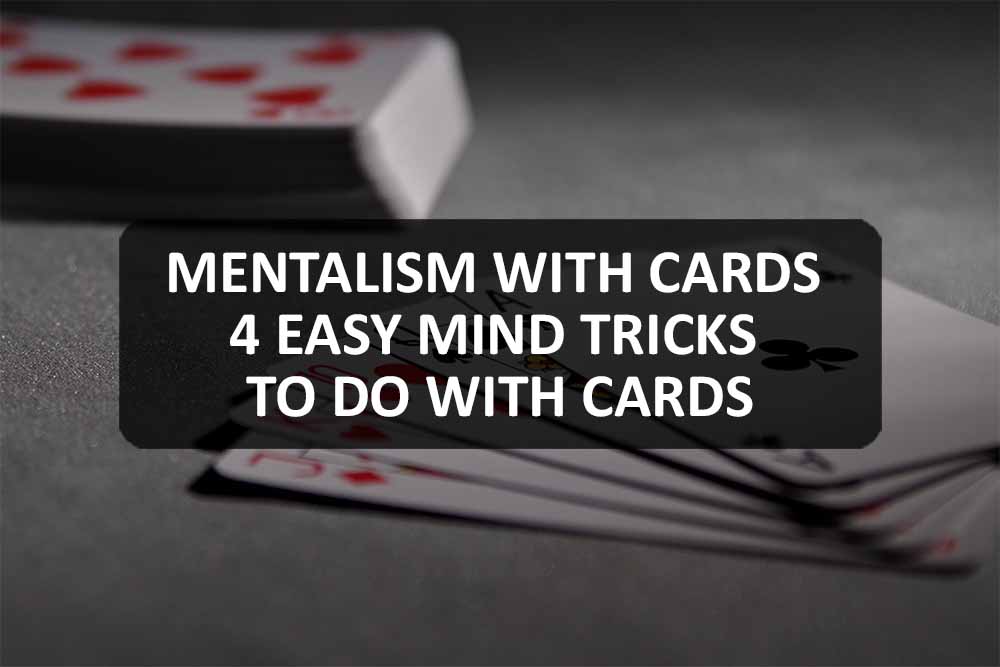Mentalism has come such a long way that there is no lack of available devices for you to use. A visit to the nearest magic shop or a quick search online allows you to get your hands on swami pencils, invisible bands, gimmick wallets, etc…
But you don’t need all those. You can impress an audience with a simple deck of cards. You can use a regular one and still amaze your audience when you complete your mentalism performance.
If you’re interested, we’re going to discuss mentalism with cards – 4 easy mind tricks to do with cards. With this, you’re sure to be the life of the party.
So let’s get started!
Mind Card Trick 1: The Six Force
This first one is a prediction trick that uses photographic evidence for the reveal. To get the best possible effect, use a phone from the audience.
When you start the trick, find a way to throw in the idea of it being a spelling test. Jay Sankey does this brilliantly in this video:
To get back to the trick, begin shuffling the deck and choosing cards. You can have your spectator do this. Any six cards from the deck will do.
Once he’s chosen them, place these face-up on the table — the order isn’t make-or-break.
Borrow a phone and say that you’re just going to take a picture of the cards. Use the phone’s screen to zoom in on the fourth card from your right and take a shot of it. Without showing the picture to anyone, place the phone face down on the table.
Now tell your spectator to choose a number between one and six. The ideal answers are three and four.
If they pick four, count the cards from your right, and you’ll end up with the card you predicted. If they choose three, start from the left — remember, you never said which end you’ll start counting. It still brings you to the same card.
But what if your spectator chooses any of the remaining numbers — one, two, five, or six? It’s where the line about the spelling test comes in handy.
The mere fact you mentioned spelling at the beginning doesn’t make it strange that you’re suddenly spelling out the number. If you spell it out, one, two, and six each have three letters. Five has four. You still get the count you want.
Once you land on your prediction card, do your reveal — the picture you took earlier clearly shows which card the spectator chose.
Mind Card Trick 2: The Magic Square
Most mentalism tricks only need a single performer. Some require two people to make it work. The Wizard is an example — it needs the mentalist and his mind-reading friend.
The Magic Square is another trick that requires two people — this time, however, both are positioned as mentalists. If you and your co-mentalist pull this off, your spectator concludes one of two things:
1.) One or both mentalists can genuinely read minds
2.) The mentalists can telepathically communicate with each other
Begin by shuffling a deck of cards. You can also ask the spectator to do this — the order of the cards is not crucial.
Ask your spectator to choose nine cards and lay them out on a table in the shape of a 3 x 3 square. Hold the remaining cards in your hand. At this point, one of the mentalists steps out of the room.
If you stay in the room with the spectator, tell the spectator to choose a card. It can be in any row or any column. Once he calls out his choice, however, he can no longer change his mind.
Call in the second mentalist. You hand your partner the deck you’ve been holding. It’s how you communicate which card your spectator chose.
As you give him the deck, make sure your thumb mimics the position of the chosen card. If your spectator chose the third card from the top, your thumb should be at the upper right hand of the top card.
All your partner has to do is spot the position, and he should be able to figure out which card the spectator called out. After that, all it takes is a bit of drama before the reveal.
Mind Card Trick 3: The P.A.T.E.O. Force
Pick any two, eliminate one — that’s what P.A.T.E.O. stands for. You can get the most out of this if you use it as part of a prediction trick.
Typically, you use the P.A.T.E.O. force on randomly selected items, but it works just as well on cards. You won’t be using the entire deck — at most, you’ll only use 11 to 12 cards. Anything more causes the trick to run for too long.
Start by shuffling the deck and then asking your spectator to choose 11 or 12 cards. You can set aside the rest of the cards after.
From the selected cards, make a prediction. Writing it down on a piece of paper which you’ll then fold and keep works best.
You and the spectator begin to take turns choosing two cards. Whoever isn’t choosing gets to eliminate one of the other person’s choices. You and your spectator repeat this until only one card is left – the card you predicted.
Several things to remember as you go through this:
- The number of cards determines who goes first. If you have an odd number of cards, you choose first. If you have an even number, your spectator begins.
- During your turns, choose two cards that aren’t the prediction. This way, it doesn’t matter which your spectator eliminates.
- If your spectator chooses the prediction card as one of his choices, eliminate the other one.
Don’t make your choices too fast — make it look like you’re thinking hard each time you have to pick. This way, you don’t look like you’re avoiding one card.
Mind Card Trick 4: The Whispering Queen
The Whispering Queen may have the lengthiest instructions, but it is an easy trick that forces a spectator to pick a specific card while giving the impression of a free choice.
The only things you’ll need are a deck of cards and a whole lot of practice before your show.
Step 1: Perform a Peak While Finding the Whispering Queen
As the trick’s name implies, one of the Queen’s plays a pivotal role. It doesn’t matter which one you use, so let your spectator choose. Let’s say she picks the Queen of Diamonds — that will be the Whispering Queen.
Go through the cards and look for the Queen of Diamonds. While you’re doing this, perform a peek. You need to see the first card in the deck if it were face down. Since you’re spreading these face-ups, remember the one at the bottom. For this example, let’s say it was the 10 of spades.
Once you find the Queen of Diamonds, set her aside.
Step 2: Create Three Piles
Have your spectator cut the deck into three. The first cut goes to the right of the deck. The second also goes to the right but further down. The goal is to have a pile with the 10 of spades in the middle.
Step 3: Use Magician’s Choice to Force the Middle Pile
You want to force the spectator to end up with the card pile in the middle — Magician’s Choice is an effective way to do that. The great thing about it is you give the illusion of free choice through your script.
It goes like this:
- Have your participant point or touch one of the piles. If she chooses the middle one, you’re good to go.
- If she chooses a pile on either end, say you’ll eliminate it and set it aside. Tell her to place her index fingers on the two remaining ones. After several seconds have her raise one of her fingers.
- If she raises her finger from the non-forced pile, set it aside along with the previous one. Have her work on the remaining one (which has the ten of spades on top).
- If she raises her finger from the forced pile, eliminate the pile she has her finger on.
Regardless of where you begin, your spectator ends up with the pile positioned in the middle. Without looking (you can even turn around), have her look at the top card and show it to the audience. You already know it’s the 10 of spades.
Step 4: Misdirection
Tell the spectator to return the card to the pile. Then have her reassemble the deck and shuffle it. You don’t need to force anything at this point because the arrangement of the cards won’t matter.
The shuffling is a form of misdirection, making it challenging for the audience to remember the steps previously done. What stays in their mind is that your spectator chose a card.
Step 5: Bring Out the Whispering Queen
This step is all about theatrics since you already know what the forced card is. Hold the Whispering Queen with your right hand. Use your left hand to lift about half the deck.
Pass the Whispering Queen in between. Hold it up to your ear and pretend that it’s whispering something.
Step 6: Do Your Reveal
As with any reveal, an abrupt ending takes some of the wonders away. It’s always better to build up the tension by doing it in bits. You can start with the color of the suit, the actual suit, or the card value.
Once you complete your reveal, your audience is sure to be astounded.
Wrapping It Up
A simple deck of cards can perform great mind tricks. The best part is that these tricks are so easy to do.
Whether you’re walking around the neighborhood, at a bar with friends, or having coffee with your colleagues, you can take these as opportunities to show your mentalism with card tricks.
Practice the 4 easy mind tricks to do with cards. Even if these are relatively easy, it doesn’t mean you don’t have to practice.
Remember, mentalism is performance art, and you are the artist. And like all artists, you must put in the effort to hone your craft.
Good luck!

